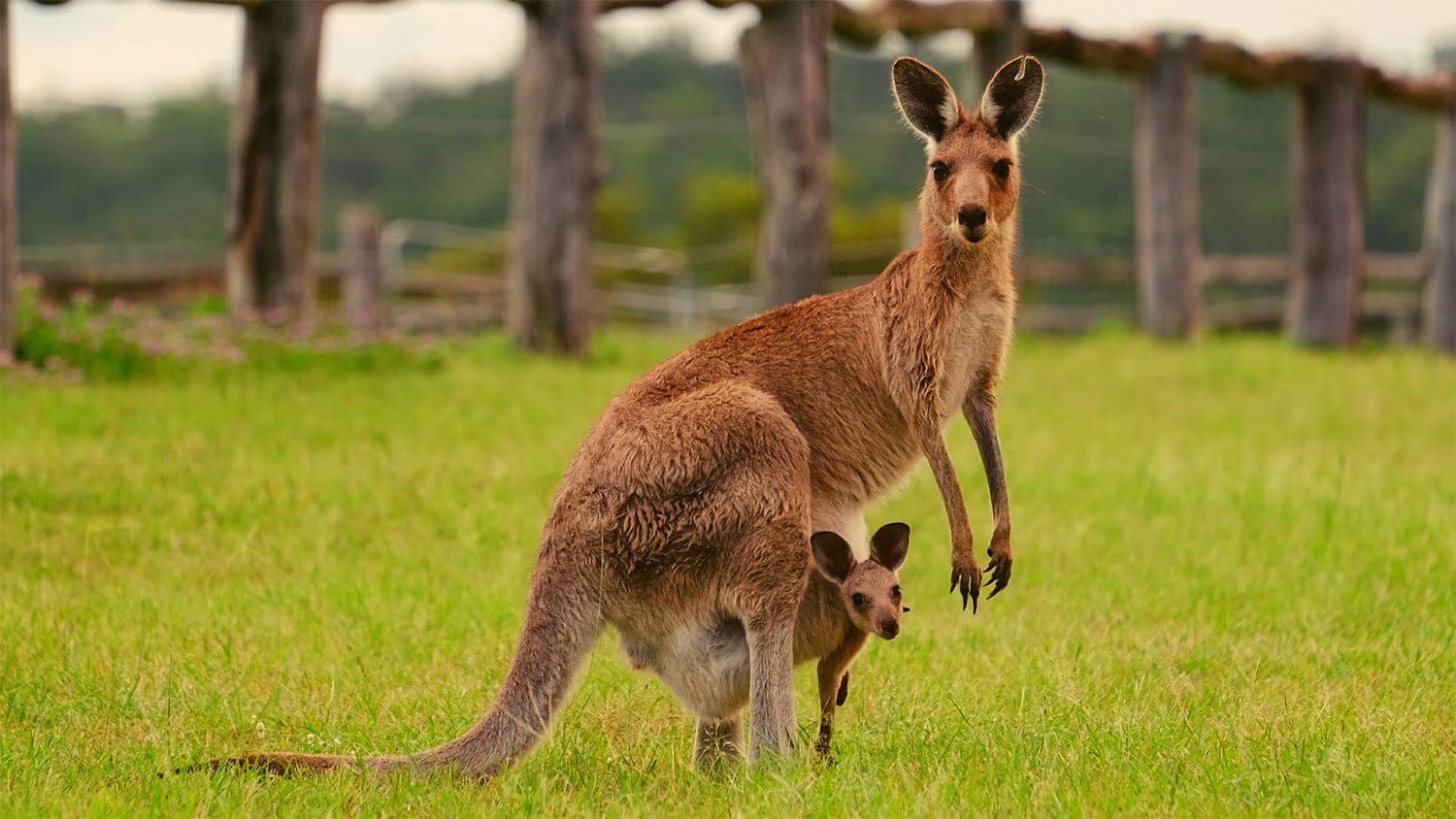
25 interesting facts about kangaroos
- 👁️ 279
Kangaroos are one of Australia’s most iconic and fascinating animals, instantly recognizable by their powerful hind legs, long tails, and unique hopping movement. These marsupials have adapted to a wide range of habitats across the Australian continent, from the cool climate of the southern regions to the tropical north. Kangaroos are not just interesting because of their appearance and behavior; they play a significant role in the ecological balance, serving as a key species in their environment. Their social structure, reproductive methods, and survival strategies have been subjects of study and admiration. Here are 25 interesting and informative facts about kangaroos that shed light on their unique characteristics and importance.
- Kangaroos are marsupials, meaning their young continue to develop in a pouch after birth.
- There are four main species of kangaroos: the Red Kangaroo, Eastern Grey Kangaroo, Western Grey Kangaroo, and the Antilopine Kangaroo.
- The Red Kangaroo is the largest marsupial in the world.
- Kangaroos are indigenous to Australia and are not found wild anywhere else in the world.
- They can hop at speeds of up to 60 kilometers per hour (about 37 mph) and leap over 3 meters (9.8 feet) high.
- Kangaroos have a unique method of locomotion, hopping, which is efficient and conserves energy over long distances.
- Female kangaroos have a pouch where their newborns, called joeys, develop and nurse after birth.
- Joeys are born extremely underdeveloped and crawl to the mother’s pouch to continue their development.
- Kangaroos are herbivores, mainly eating grass, leaves, and sometimes flowers.
- A group of kangaroos is called a mob, and it usually consists of 10 or more members.
- Kangaroos have excellent hearing and are able to swivel their large ears in all directions to pick up sounds.
- Their strong tails are used for balance while hopping and as a fifth limb when moving slowly.
- Kangaroos can go long periods without water, which is vital in their often arid habitats.
- They have a complex social structure and can exhibit behaviors such as grooming and mutual protection.
- Male kangaroos are known as bucks, boomers, or jacks; females are known as does, flyers, or jills.
- The boxing behavior seen in kangaroos is actually part of their mating ritual and dominance fights between males.
- Kangaroo mothers can pause the development of an embryo until the previous joey is able to leave the pouch, a process known as embryonic diapause.
- The kangaroo’s digestive system can ferment grass, much like a cow’s, reducing methane emissions.
- They have a lifespan of about 6 to 8 years in the wild but can live up to 20 years in captivity.
- Kangaroos are mostly nocturnal or crepuscular, being most active during the cooler times of day.
- Each species of kangaroo has a different type of social structure, ranging from solitary to highly social.
- Kangaroos have a powerful kick that can cause serious injury to their predators.
- Red Kangaroos occupy the largest range of any Australian land mammal.
- Kangaroos have a four-chambered stomach that helps break down their fibrous diet.
- The kangaroo is a national symbol of Australia, appearing on the country’s coat of arms, some of its currency, and is used by some of Australia’s most well-known organizations.
Kangaroos are remarkable creatures that have evolved unique adaptations to thrive in varied environments across Australia. Their ability to hop at high speeds over long distances, coupled with their reproductive strategies, make them one of the most interesting subjects of study in the animal kingdom. Kangaroos not only contribute to the natural beauty and ecological diversity of Australia but also embody the spirit of the continent. Their continued existence, amidst changing environments and growing human populations, underscores the importance of wildlife conservation efforts to preserve these unique animals and their habitats.
Kangaroos are one of Australia’s most iconic and fascinating animals, instantly recognizable by their powerful hind legs, long tails, and unique hopping movement. These marsupials have adapted to a wide range of habitats across the Australian continent, from the cool climate of the southern regions to the tropical north. Kangaroos…